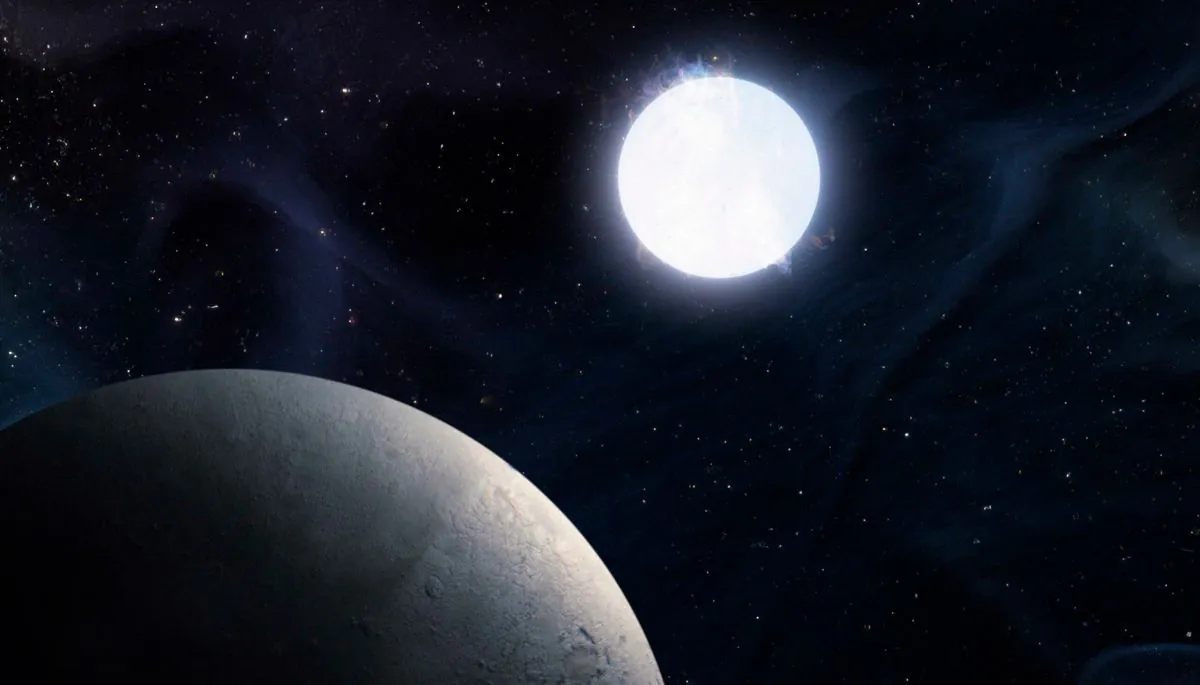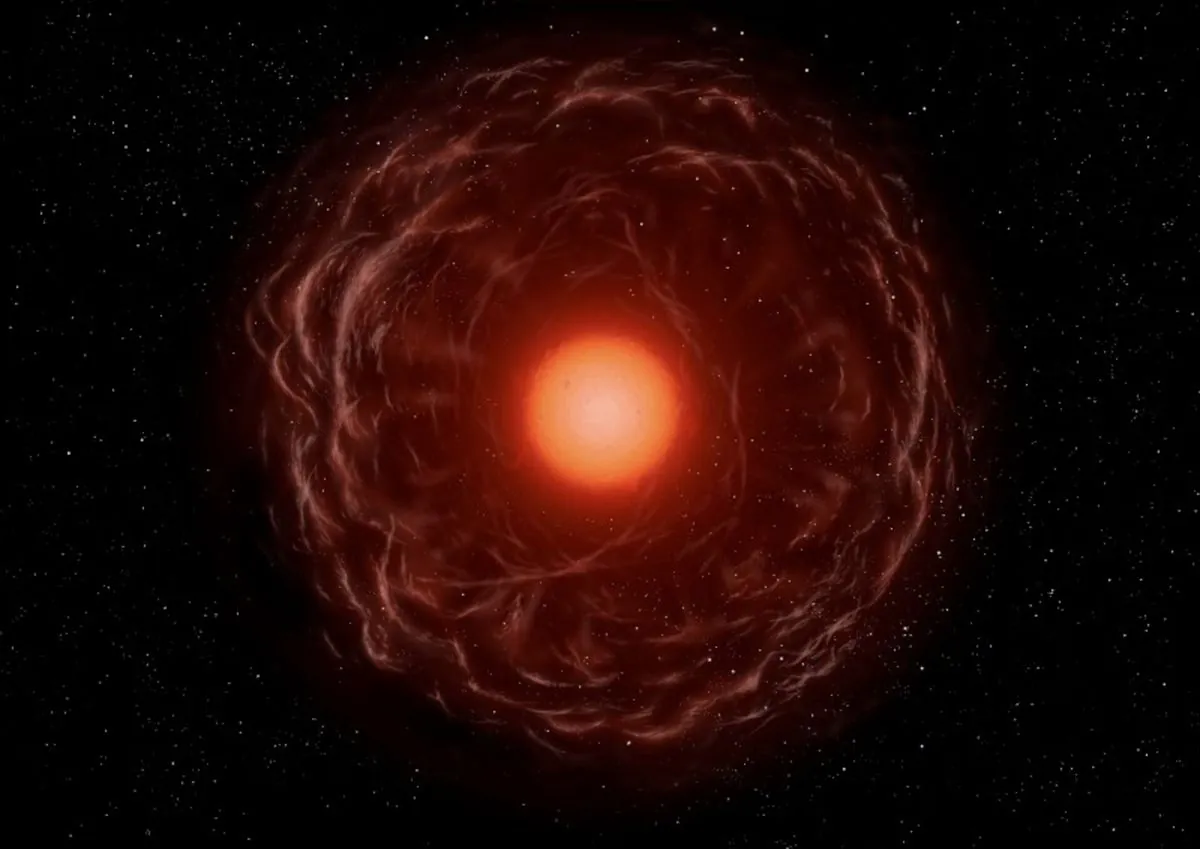Earth-like Planet Orbiting Dead Star Offers Glimpse into Solar System's Future
Astronomers discover a rocky planet orbiting a white dwarf 4,200 light-years away, suggesting Earth might survive the Sun's demise. The finding provides insights into our solar system's distant future.

Astronomers have made a groundbreaking discovery that offers a potential glimpse into our solar system's distant future. A rocky planet, approximately 1.9 times the mass of Earth, has been found orbiting a white dwarf star about 4,200 light-years away from our solar system. This finding, published in the journal Nature Astronomy, marks the first time a rocky planet has been observed orbiting a stellar remnant of this type.
White dwarfs are the remnants of stars that have exhausted their nuclear fuel. They are incredibly dense objects, with a mass comparable to our Sun but a volume similar to Earth. The discovery of this planet challenges previous theories about planetary system evolution and provides valuable insights into the potential fate of our own planet.
The white dwarf in question began its life as an ordinary star, one to two times the mass of our Sun. Before its demise, the planet orbited at a distance that potentially placed it within the star's "habitable zone," where conditions could support liquid water on its surface. Following the star's transformation into a white dwarf, the planet's orbit expanded to about 2.1 times its original distance.
Keming Zhang, lead author of the study from the University of California, San Diego, explains, "It's currently a freezing world because the white dwarf, which is in fact smaller than the planet, is extremely faint compared to when it was a normal star."
This discovery has significant implications for our understanding of Earth's future. Our Sun, currently about 4.5 billion years old, is destined to become a white dwarf in approximately 8 billion years. Before that, it will enter a red giant phase, expanding dramatically and potentially engulfing the inner planets.

The fate of Earth during this process has been a subject of debate among astronomers. Jessica Lu, a co-author from the University of California, Berkeley, describes the process: "At the end of our sun's life, it will puff up to enormous size - astronomers call it a red giant - and gently blow off its outer layers in a wind. As our sun loses mass, the planets' orbits will expand to larger sizes."
The discovery of this rocky planet orbiting a white dwarf suggests that Earth's chances of survival might be higher than previously thought. However, it's important to note that even if Earth survives, it would likely be a cold, desolate world, far from its current habitable state.
As we look to the future, the habitability of Earth is expected to decrease long before the Sun's red giant phase. Zhang estimates that Earth will remain habitable for less than a billion years from now, by which point its oceans will likely have evaporated due to increasing solar radiation.
This research not only provides insights into our planet's distant future but also opens up new avenues for studying the long-term evolution of planetary systems. The study of white dwarfs and their planetary companions contributes to our understanding of stellar lifecycles, the chemical evolution of the universe, and potentially, the search for habitable worlds beyond our solar system.
While the prospect of Earth's eventual fate may seem daunting, Zhang offers a perspective on the future of life: "We must migrate out of Earth prior to the one-billion-year time scale." He suggests that large moons in the outer solar system, such as Jupiter's Ganymede and Saturn's Titan and Enceladus, might offer potential refuges in the distant future.
As we continue to explore the cosmos and uncover its mysteries, discoveries like this remind us of the dynamic nature of our universe and the importance of long-term thinking in our approach to space exploration and the preservation of life.
"There's hope."
This simple yet profound statement encapsulates the optimism that scientific discovery can bring, even when contemplating events billions of years in the future.


































